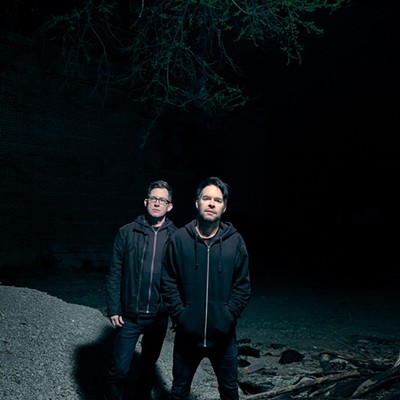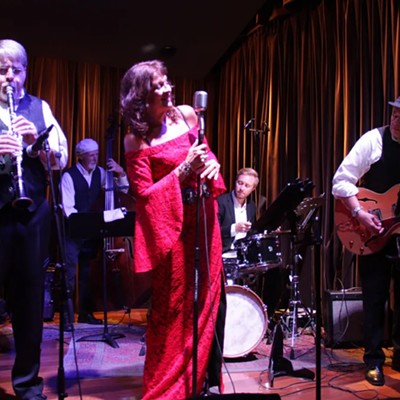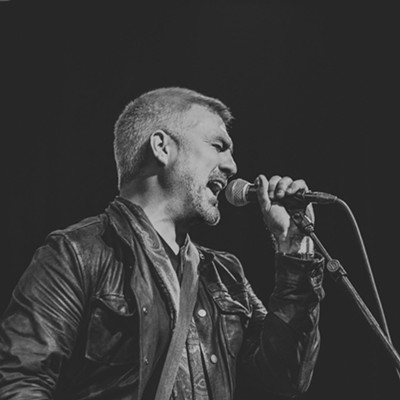These words belong to Spanish explorer and chronicler Bernal Díaz del Castillo, and they were written in 1520, after Spain had landed in the Valley of Mexico.
They were his response to what he could not believe his European eyes beheld: a New World civilization with enough homegrown technology to build pyramids of geometry and stone that lifted the earth closer to the sky. Cut and paste Castillo's astonishment onto the present, and it's a rarely heard First World commentary on the Third--the First World marveling at the technological sophistication of the very folks they're supposed to school, the pre-conquista equivalent of bringing typewriters to a people who are already rocking Macintosh G4s.
But the Spaniards took the Aztecs out, and what's endured over the centuries is a colonial residue that continues to see Mexico through the opposite lens, as a country hopelessly resistant to modernity, where poverty, corruption, moral shiftiness, and a "mañana" anti-work ethic reign. "Hecho en Mexico" ("Made in Mexico"): shorthand for "It's gonna break." Of course, underneath all this misrepresentation is an entirely different Mexico, a low-tech-meets-high-tech story of tradition getting hotwired and reconfigured within the circuits of advanced information technologies.
Celebrating this Mexico--electro-Mexico, digi-Mexico--is at the core of Nortec, a new multimedia artistic movement based in Tijuana. Organized around a collective of DJs, musicians, architects, fashion designers, visual artists and theorists, Nortec uses digital technology to fuse all things locally norteño with all things globally techno. There have been Nortec art exhibits, fashion shows and architecture installations, but the heart of the group is the music being released on the Mil Records label: samples of old banda and norteño albums fed into Mac editing software and then recombined over ambient synth washes and icy beat patterns.
Two years in the making, The Tijuana Sessions Vol. 1 (Palm; released February 20) is the first complete Nortec mission statement. Fourteen cuts of bordertronic hybrids in which banda's burping tubas and machine-gun-quick snare rolls put drum 'n' bass on Tijuana's notorious tourist drag strip Revolución Avenue, and norteño's accordions and guitar strums dress acid-jazz bohemianism in urban-ranchero Stetson hats and tassels. It is, to paraphrase one day-glo Nortec design slogan, gun-slinging narco-corrido king Chalino Sanchez reborn as a postmodern original gangsta.
Bringing new technology to bear on traditional Mexican culture certainly isn't a Nortec invention (Mexico City composer Jorge Reyes has been making pre-hispano electronica for decades), and they're certainly not the only Kraftwerk-descended Mex-ravers to do it (Guadalajara's Nopal Beat crew has launched its own attack on the Opción Sónica release Acid Cabaret, where jackhammer techno pulses through Mexican cabaret music and ocarinas).
But what Nortec adds to the tech-Mex equation is an aesthetic philosophy that views making music out of the North and South as a necessary means of making a better life for a world that exists between North and South. As one of Nortec's principal ideologues, Pepe Mogt, puts it: "We had to register hundreds of hours in front of the radio searching for sound waves from the North that would take us away from everything we were not or did not want to become."
It is this "Fourth World" of the border that Nortec architect Raul Cardenas explores in his art laboratory and clothing company Torolab. Visit his elegantly designed site (www.torolab.com), and you'll see that Cardenas takes Nortec's audio collisions and turns them into architectural blueprints, installation sculptures, tools for art education, and theories for better living through border technology: "Wearing phenomenoscopic goggles, driving the improbability engine, reinventing pretext." Enrique and Joselo Rangel of Mexico City art-rock band Café Tacuba are Torolab associates, as is Enrique Jimenez, a.k.a Ejival, a Tijuana writer and DJ, and the founder of Nimboestatic--the electronica label responsible for last year's lush La Tejedora de Nubes compilation, which is dedicated, in his words, "to returning beautiful sound to the sad land of this nation."
Most refreshingly, with all its sophisticated design innovation, theoretical manifestoes, digital audio Nortec loops and badass T-shirt logos, Torolab is also committed to teaching. More than its music, then, the greatest legacy of Nortec as an art movement will lie in putting its ideas about technology and border culture--about how utilitarian art can transform the worlds we are given into worlds we want to live in--into the hands of a new generation of artists and DJs, so that they, too, can come up with things never heard, or seen, or even dreamed.
This article originally appeared in the Boston Phoenix.







